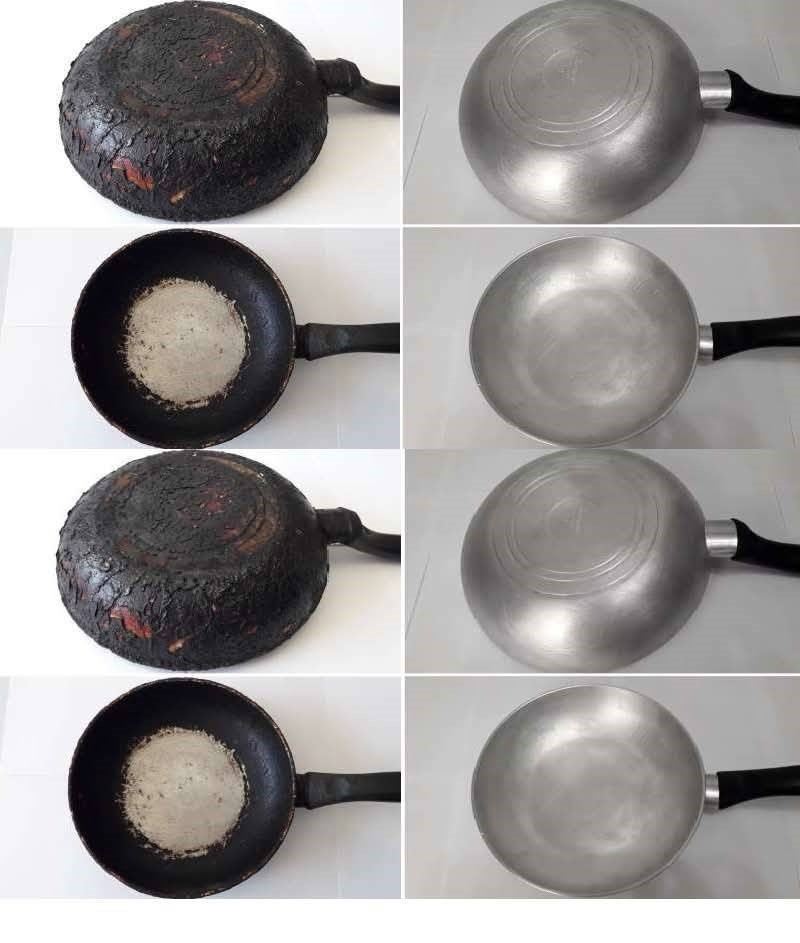ADVERTISEMENT
**Step 4: Use the Right Tools for the Job**
The cleaning tools you use will greatly affect the speed and quality of your cleaning. Here are a few tools that I swear by:
– **Scrub brushes**: A good scrub brush with stiff bristles can easily clean the insides of pots and basins. It’s better than a sponge when dealing with baked-on food.
– **Sponges**: Use sponges with a soft side for general cleaning and a rough side for tougher spots. Make sure your sponge is clean, as old or dirty sponges can spread bacteria.
– **Microfiber cloths**: These are perfect for wiping down surfaces without leaving streaks. Use a microfiber cloth for drying or polishing after washing.
**Tip:** Invest in a set of long-handled brushes and scrapers that can reach into deeper parts of large pots or basins without straining your back. These tools will save you a lot of time and effort.
**Step 5: Efficiently Scrub Pots, Basins, and Other Items**
Now it’s time to get down to business! Start with the largest items, like your pots, and work your way down to the smaller items. Scrub the inside of each item using circular motions with your scrub brush. For tough spots, use the rough side of your sponge or a spatula to scrape off any remaining residues. Don’t forget to scrub the lids, handles, and sides of your pots as well.
For basins and bowls, be sure to pay attention to the rims and any grooves where food may have accumulated. This is often a place where grime can hide and become more difficult to clean later. By giving this area extra attention, you ensure that your kitchenware is not only visually clean but truly hygienic.
**Tip:** To save time, scrub several items at once. For example, if you have multiple smaller items like plates, bowls, or utensils, wash them together in batches, rather than one at a time.
**Step 6: Rinse Thoroughly**
Once you’ve scrubbed all of your pots and basins, it’s time to rinse them. At the dacha, you may need to rely on a small bucket or a basin of clean water for rinsing. Make sure that all soap, vinegar, and baking soda residues are completely washed away to prevent any leftover residue that could affect the taste of food in the future.
If you have access to running water, it’s best to rinse each item thoroughly under a steady stream of water. For a quick rinse, you can also use a clean, damp cloth to wipe away the soap.
**Step 7: Dry Quickly and Effectively**
After rinsing, the next important step is drying. Since water may not always evaporate quickly at the dacha, it’s best to dry your kitchenware immediately to prevent water spots, streaks, or the growth of bacteria. Use a clean, dry dish towel to wipe down your pots and basins.
For items that you can’t wipe dry immediately, place them on a clean dish rack or towel and let them air dry. Air drying is a great option for basins, but for pots and other larger items, towel-drying ensures you’re able to use them again as quickly as possible.
**Tip:** Keep a designated drying towel at your dacha to quickly wipe down all pots, pans, and basins as you finish washing them. This saves you time and ensures that your kitchenware is always ready for the next use.
**Step 8: Take a Moment to Clean Your Space**
Once the pots and basins are all cleaned, it’s a good idea to quickly wipe down your washing area. Wipe down the surfaces where you washed the dishes and remove any soap residue or splashes. This will ensure your workspace is clean and organized for the next round of cooking or cleaning.
### Time-Saving Tips for Dacha Dishwashing
Here are a few additional time-saving tips that can help streamline your dishwashing routine at the dacha:
– **Batch Washing**: Instead of washing each item individually, try grouping similar items together. For example, wash all the plates and cups first, followed by pots and basins. This will save time and make the process more efficient.
– **Use a Dishpan**: A dishpan or large basin allows you to soak and wash dishes without wasting water. This is especially useful in dachas that rely on limited water supply.
– **Minimize the Dishes**: When cooking at the dacha, try to minimize the number of pots, pans, and utensils you use. Simplifying your meal prep can cut down on the cleaning you’ll need to do afterward.
– **Clean As You Go**: To avoid a pile-up of dirty dishes at the end of your cooking session, try to clean as you go. Wash utensils, bowls, and pots as soon as you’re done using them, leaving less for you to do later.
### Conclusion
Washing all the pots and basins at your dacha in just **10 minutes** is possible with a little preparation, the right tools, and a systematic approach. The key to achieving this lies in using a combination of effective cleaning solutions, the right scrubbing tools, and a quick, efficient rinsing and drying process. By following the steps outlined in this article, you can ensure that your kitchenware is sparkling clean and ready to be used again in no time.
With these simple tips, you can spend less time cleaning and more time enjoying the beautiful, peaceful surroundings of your dacha. Cleanliness doesn’t have to be a long and tedious task—it can be done in the blink of an eye. Try it out next time you’re faced with a pile of dirty dishes, and let the power of efficient cleaning work its magic!
